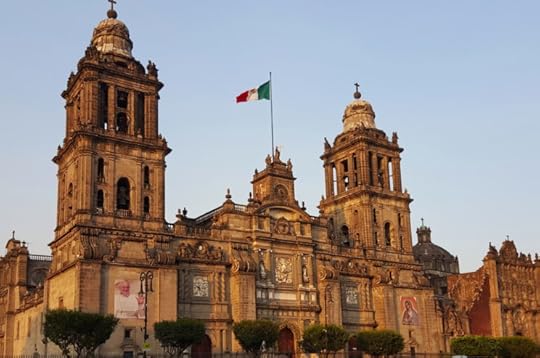A reading list of Mexican history and culture
On 16 September 1810, a priest named Miguel Hidalgo y Costilla delivered a proclamation in the small town of Dolores that urged the Mexican people to challenge Spanish imperial rule, marking the start of the Mexican War of Independence. To commemorate Mexican Independence Day and the “Grito de Dolores,” we’ve compiled a reading list of articles from the that explores the rich history, culture, and traditions of the Mexican people.
1. by Jeffrey M. Pilcher
Mexican cuisine is often considered to be a mestizo fusion of indigenous and Spanish foods, but this mixture did not simply happen by accident; it required the labor, imagination, and sensory appreciation of both native and immigrant cooks. Jeffrey Pilcher examines the fusion that defines Mexican national identity. He explores how the tastes of the culture changed with the rise of industrial agriculture, from bitterness toward sweetness as the predominant sensory experience.
2. by María Teresa Fernández Aceves
From the War of Independence until the recognition of female suffrage in Mexico in 1953, the women of Guadalajara witnessed different forms of activism that touched upon national and local issues, causing them to take to the streets in order to defend their families, their neighborhoods, and their communities – which were their political and religious ideals. Fernández Aceves’ article looks at how the women of Guadalajara upended traditional notions of femininity within the Catholic Church, the liberal state of the 19th century, and the public square after the revolution (1920–1940).
3. by Christoph Rosenmüller
How did indigenous cultures in colonial Mexico change with the introduction of Spanish missionaries and Spanish rule? How did such communities continue their traditions and adapt to coexist with the Spaniards? Christoph Rosenmüller explores these questions in this article addressing the period after the Spanish conquest of the Aztecs.
 “Mexico City” by Blok 70. CC BY 2.0 via Flickr.
“Mexico City” by Blok 70. CC BY 2.0 via Flickr.4. by Jürgen Buchenau
The Mexican Revolution was the first major social revolution of the 20th century. Its causes included the authoritarian rule of Dictator Porfirio Díaz, the seizure of millions of acres of indigenous village lands by wealthy hacendados and foreign investors, and the growing divide between the rich and the poor. Jürgen Buchenau explores the effects of the revolution from the insurrection and civil war (1910–1917); reconstruction (1917–1929); and institutionalization (1929–1946).
5. by Susie S. Porter
From la Adelita to the suffragette, from la chica moderna to the factory girl dressed in red shirt and black skirt—the colors of the anarchist—women’s mobilization in the midst of the Mexican Revolution was, to a large degree, rooted in their workforce participation. Susie S. Porter examines how women changed the conversation about the rights of women—single or married, mothers or not, and regardless of personal beliefs or sexual morality—to involve issues of dignity at work, and
the right to combine a working life with other activities that informed women’s lives and
fulfilled their passions.
6. by Elena Jackson Albarrán
The family structure, both nuclear and extended, often functions as a microcosm of the institutional organization of power. Historian Soledad Loaeza has noted that this comparison goes beyond a facile metaphorical observation; within the family, individuals experience their first contact with authority, and they first begin to construct their social and political identities within the context of this power rubric. Elena Jackson Albarrán examines how the shape, function, and social meaning of the Mexican family changed alongside its relationship to the state, the Catholic Church, and popularly held beliefs and customs over the past 140 years and more.
7. by Roderic Ai Camp
Public opinion polls played a critical role in Mexico’s democratic political transition during the 1980s and 1990s. It informed ordinary Mexicans about how their peers viewed candidates and important policy issues, while simultaneously allowing citizens, for the first time, to assess a potential candidate’s likelihood of winning an election before the vote and also confirm actual election outcomes through exit polls. Roderic Ai Camp discusses how polling data reveal changing social, religious, economic, and political attitudes among Mexicans over time—revealing the importance of both traditional and contemporary values in explaining citizen behavior.
Featured image credit: “Mexico, Puebla, Cuetzalan” by CrismarPerez. Public Domain via Pixabay.
The post A reading list of Mexican history and culture appeared first on OUPblog.

Oxford University Press's Blog
- Oxford University Press's profile
- 238 followers



